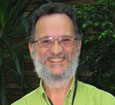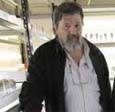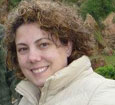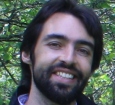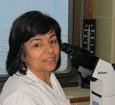My research focuses on the study of the life cycle and nuclear processes of dinoflagellates and their parasites. Dinoflagellates can grow massively and reach very high cell densities, forming what is known as a bloom, which sometimes is called wrongly “red tide” (the colour is variable and depends on the species involved). The bloom can have noxious and/or toxic effects to humans depending on the blooming species. Therefore, the problem is not the presence of dinoflagellates, but their uncontrolled growth. In my works I study the asexual (mitotic) and sexual (meiotic) division processes and the ecological factors involved in the transition between them. Another very interesting thing, it is that dinoflagellates have a very particular and fascinating nucleus, which can contain up to 70 times more DNA than a human cell. I am also interested in the evolutionary processes shaping this nucleus and its chromosomes, for which I use as research tools microscopy, flow cytometry, Fluorescence In Situ Hybridization (FISH), inheritance studies and population genetics. I am also interested in the parasite genus Parvilucifera, given that dinoflagellates infected by this parasite change their life cycle to adapt to the infection, which can control the bloom in its initial phases.



